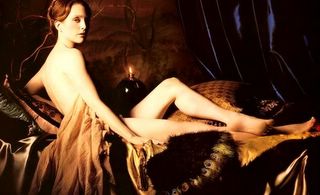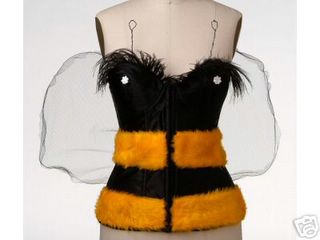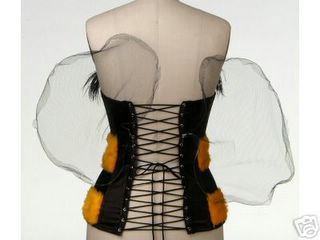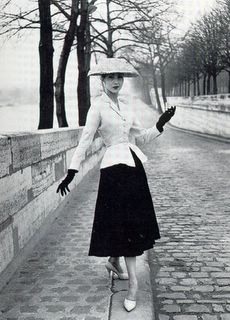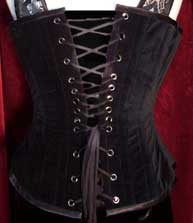“New Look” A fashion introduced by Dior in 1947, which featured a narrow, nipped waist (often corsetted) and wide flaring skirts with crinoline propping.
Night Corset Since tightlace training requires consistent wear, devotees will wear a corset at night. It is usually a larger-waisted version than the daytime corset; alternatively, a wide belt is used to keep the organs in place until the next morning. Some will use a tightlacing ribbon corset for this, and for exercising as well.
El "nuevo look" Moda introducida por Dior en 1947, que se caracterizaba por una cintura pronunciadamente estrecha (normalmente encorsetada) y una falda de capa con una almidonada crinolina o tutú.
Corsé de noche. A partir de los numerosos seguidores del entrenamiento de cintura, lo cual implica un entrenamiento constante, saldrá al mercado un corsé para la noche. Es normalmente un modelo más ancho que el corsé de día; alternativamente, también se utilizará una correa ancha para mantener los órganos lugar hasta la mañana próxima. Algunos utilizarán las cintas para atar el corsé para este mismo fin.


